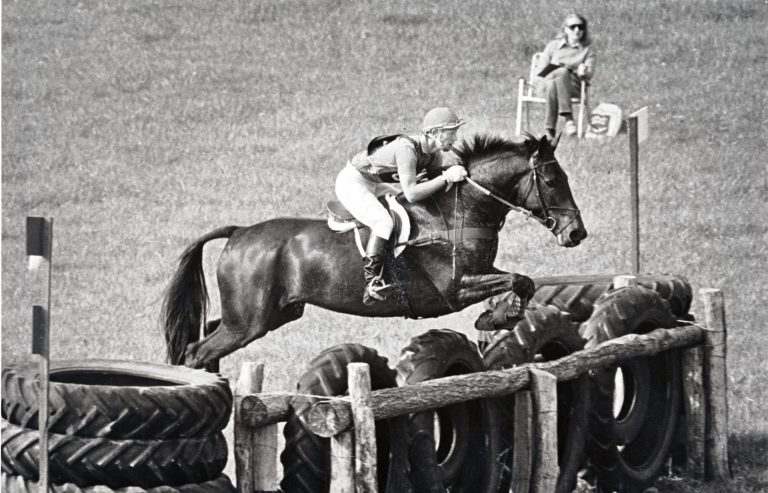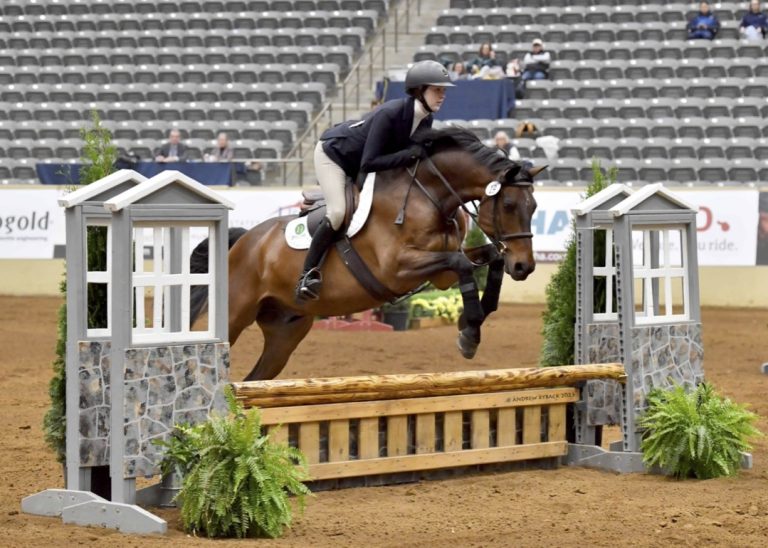American National Riding Commission, Inc. (ANRC)
What it is: Promotes a contemporary, systematic approach to riding, training and teaching through a rider certification program and Equitrials competitions.

Competition: Equitrials (two- or three-phase competitions) offer Levels 1-3, ranging from 2-foot-6 to 3-foot courses. Includes program ride, hunter trial equitation and hunter seat equitation course.
National Championship: Run at the Intermediate Level (approximately 3-foot fences). Team and individual competitions; consists of a written phase, a program ride using U.S. Equestrian Federation Tests 1-19, 3-foot hunter trials equitation on an outside course and a 3-foot hunter seat equitation course in the ring.
Other: Colleges compete on their own horses. Schooling allowed before all phases.
www.anrc.org
Intercollegiate Dressage Association (IDA)
What it is: Provides a series of dressage competitions affiliated with the U.S. Dressage Federation for member colleges and universities.
Competition: At each show, individual and team points are earned, which count toward regional standings and qualification for national finals. Levels include Introductory, Lower Training Level, Upper Training Level, First Level and Open. Riders move up levels based on points earned.
National Championship: Team and individual qualifications at all levels.
Other: Horses and tack are provided by the host school and assigned by draw. Riders have 10-15 minutes of warm-up time and may be assisted by coaches.
www.teamdressage.com
Interscholastic Equestrian Association, Inc. (IEA)
What it is: Promotes and improves the quality of equestrian competition and instruction available to middle and secondary school students (grades 6-12). Hunt Seat -Equitation and Western Divisions.
Competition: Divided into Futures, Junior Varsity and Varsity based on grade and experience. Points at regular shows are used for qualification toward Regional and Zone Finals.
National Championship: For top qualifiers at the Zone Finals based on placings. Team and individual competition at all levels.
Other: Horses and tack are provided by the host school and assigned by draw. Flat class riders mount and ride the horses with no warm-up; Over Fences class riders are allowed two practice jumps.
www.rideiea.com
Intercollegiate Horse Show Association (IHSA)
What it is: Promotes competition for college and university undergraduates of varying skill levels in Hunt Seat -Equitation and Western Divisions.
Competition: Eight levels of competition for Hunt Seat Equitation riders, walk-trot through Open (Medal/Maclay level); six levels for Western Horsemanship. Team and Individual competition. Riders can move up the levels based on points earned. Classes for alumni available. Regular point shows, regional and zone finals.
National Championship: For top qualifiers at the zone finals based on team and individual placings. Competition at all levels, including alumni.
Other: Horses and tack are provided by the host school and assigned by draw. No schooling allowed.
www.ihsainc.org
International Student Riding Association (ISRA)
What it is: A nonprofit organization that helps American university students compete internationally at student-sponsored equestrian competitions. Membership allows eligibility to compete in International Student Riding Competitions.
Competition: Tournament style, with each round increasing in difficulty. Each team rider competes in both dressage and show jumping. Dressage: Final round includes freestyle and Prix St. Georges-level test. Show Jumping: Up to 4-foot-6 in final round.
National Championship: Held every two years in different locations.
Other: Horses and tack are supplied by the organizers. A five-minute warm-up with two practice jumps in show jumping is allowed.
www.usastudentriding.com
NCAA Varsity Equestrian
What it is: Recognized as a Division I and II Emerging Sport by the National Collegiate Athletic Association–a voluntary organization through which the nation’s colleges and universities govern their athletics programs. Added as a way for schools to meet the Title IX (gender-equality) requirements. Hunt Seat Equitation and Western Divisions.
Competition: Head-to-head competition for women only in equitation on the flat and over fences (2-foot-9 to 3-foot-6 jumps)
National Championship: Tournament-style team competition a championship round for teams and individuals.
Other: Horses and tack provided by host school. Horses assigned by draw. Timed warm-up, including four fences, with assistance of team coach allowed. Offers scholarships.
www.varsityequestrian.com
(NOTE: If your school of choice doesn’t already have a team, many of the association websites provide information on how to start one.)
For more articles on and resources for educational opportunities, see the December issue of Practical Horseman magazine.










